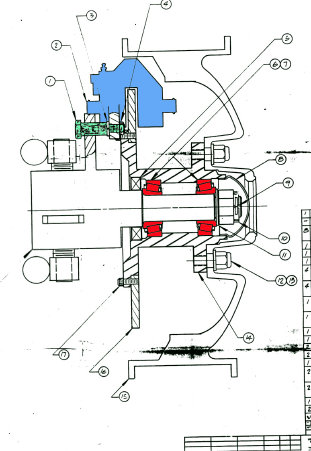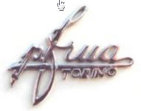As Recently as March 2014, Why is Amectran Still
"The World’s Only REAL Electric Automobile"?
N.B.: No company in the World, except Amectran, has ever done what is required in order to qualify as a “REAL” Electric Automobile
The following will justify that contention...as fact.
General Electric, Emerson Electric, Baldor Electric Motors, and Reliance Electric Motors (a division of humble oil), all began providing research development and design work. It was General Electric, through the efforts of Mr. Earl Earlwonger, who was in almost daily contact with the Amectran staff, to complete a totally new design electric motor to be used as a propulsion system for the EXAR-1 electric automobile.
Bendix and Hurst Airheart along with data from General Electric on the torque developed by the electric motor; weight calculations from Ling-Temco-Vaught and Bell Helicopter engineers (working in their off hours), including footprint dimensions, tire and wheel size, as related to the ring and pinion set; drive-train data by ZF, Spicer Clutch and TRW, were critical to the development of the brake system to be introduced by Amectran. For the first time in history, an electric automobile proposed for mass production, Amectran would be using regenerative-breaking as the primary braking system for its EXAR-1. The secondary system, which would only come into effect in an emergency stop, is provided by four-wheel disc brakes controlled by two separate master cylinders.
ZF, Spicer Clutch and TRW participated in the selection of a transmission system for the EXAR-1. While each presented different solutions, a common thread evolved based on the characteristics of the electric motor. Research and development, which included considerable heuristic testing, revealed an operating element peculiar to electric automobile operation versus that of gasoline automobiles. This idiosyncratic behavior once solved allowed the EXAR-1 to be the most advanced electric automobile in the world. Currently the automobile industry is learning the advantages of using 6 and 8 multi-gears systems in their newly developed transmissions.
Eaton-Yale provided airbags assemblies for driver’s wheel and passenger seating for use in the EXAR-1 as early as 1976, while automobile companies refrained from airbag usage, and as matter of fact, even resisted implementation of seat belts. Eaton-Yale recommended that All-State Insurance Company work with Amectran to provide insurance safety recommendations, as well as cost analysis for insurance in consideration of the EXAR-1’s safety systems and antitheft capabilities. Amectran computer in as demonstrated in the August 1976 issue of Southwest Airlines Magazine not only prevented theft of the EXAR-1, but also included a system whereby drunk drivers could not drive the car.
Dr. Lamont Elting, chief investigator for Eaton-Yale on the EXAR-1 project, referred to the EXAR-1 as, “…a real electric automobile” and provided not only the research and development of air-bags systems for the EXAR-1, but also provided all the assemblies at no cost – this, as the result of their respect for the Amectran project…of course while charging GM others $50,000 per unit.
DuPont Corporation was responsible for the development of Glass Plastic, a product which is not used by anyone in the automobile industry because of its additional cost over the price of cheap tempered safety glass. This product was recommended to Amectran by the National Highway Traffic and Safety Administration for its protection against harmful UV rays, and its exceptional safety benefits.
Composite materials on the EXAR-1 were also provided by DuPont and became a substantial contribution to production. This technology provides for reduction in the cost of repairs on body parts from an estimated $1000 to, for example, replace a quarter panel, for just $100-$300 as the result of Amectran’s body on frame construction.
Sanyo Compressor Company worked with Amectran to develop a totally new automobile air conditioning system to reduce the high usage of electric battery power. The result was an automobile air conditioning system that would not only provide the best system to air condition the passenger compartment, but would also provide cooling for the battery compartment during hot weather conditions where electric automobile batteries lose substantial power. The development of this system, if used by gasoline powered automobiles today would reduce gasoline consumption by some 17%. While this system would provide American savings of millions of barrels of oil, Amectran was unable to go into production; therefore the system remains unexposed to the government and auto industry. Should the government be aware of this technology, no doubt it would be mandated for all new electric automobiles, as well as all new gasoline automobile. This resulting is savings of billions of barrels of oil.
Webasto and Stewart-Warner’s South Wind division worked to provide a heating system sufficient to heat the passenger and battery compartments during cold weather. Fuel for the heater was provided by a tank in the motor compartment and could run on gasoline, natural gas, or butane, in order to conserve battery power. Also, using a battery powered heater was and is impractical as in very cold weather batteries lose a great deal of power and must be heated to maintain their charge. As in past models Amectran avoided the problems encountered by cars such as the GM Corvair and others who used this technology. The idea was to provide sufficient heat to last for several days under northern weather conditions. Modern electrics have ignored this problem as attested to by the following article…
Trojan, as well as Magneti Marelli battery companies provided batteries while Argonne National Labs, Eagle Pincher, Yardney Electric Company, ABB (Asea, Brown, Boveri), and Lithion Inc., provided research on Sodium-Sulphur, Silver-Zinc and Nickel-zinc, as well as Hydrogen fuel cell technology. Since then, the development of Lithium and Nickel-zinc has been preeminent... improvements in battery technology will double by 2016.
EMC, Snow Corporation was chosen for their superior development in the vacuum forming industry: This system is to be used in the production of the EXAR-1. This company’s reputation with General Motors, Boeing Aircraft, General Dynamics, TI, as well as companies in Japan, Taiwan, Thailand and throughout the rest of the world, is outstanding and certainly the natural firm to develop the manufacturing, tooling design, machines, tools, dies and assembly line as a turnkey factory to produce the EXAR-1 electric automobile.
Alpine Electronics of America provided an audio system which included a remote key control and antitheft warning device system, 8” in dash popup screen, as well as many other features commensurate with the time. This of course, like so many of Amectran’s innovations, was never considered for any massed produced electric automobile before the year 2000.
In 1975, 8 bit software was used to voice control the lights, windshield wipers, heater and air conditioning system, turn indicators, mirrors, audio system and GPS, all locks and windows: Also displayed was a computer program to prevent drunk drivers from driving the EXAR-1. This same program also displayed battery temperature; battery condition, both power, and state of charge; antitheft protection and limited range and speed protection. The EXAR-1 and this system were demonstrated to representatives of the People’s Republic of China in 1992. As a result, Amectran was invited to the PRC as their guest, resulting in a $180 million U.S. Dollar license agreement (see 'What the Government Did" section..
Pietro Frua was asked to design the EXAR-1 body as the result of his reputation and the conservative approach to long lasting automobile concepts, which include among others, Lamborghini, Maserati, De Tomaso, Rolls Royce, BMW, Porsche, etc.
During the years 1974-1996, the United States Department of Transportation provided advice on safety, production and manufacturing responsibility, as well as testing of Amectran’s Frua designed EXAR-1. The result of several successful days of testing the EXAR-1 proved its outstanding performance. A performance which proved all the claims made by Amectran. It should be of extreme importance, that the Secretary of Transportation recommended that the United States Government purchase EXAR-1’s as he testified before the Senate of the United States recommending the project, “Yes, I think that is a good vehicle. We should pursue it.” The Secretary was forced to resign over support of the Amectran project. His recommendation was acted upon by the Secretary of Commerce.
United States Department of Commerce, supported Amectran and its EXAR-1 project by providing introductions to beneficial government organizations, such as OMBE (Office of Minority Business Enterprise), and others. The Secretary of Commerce personally endorse and offered to fund Amectran’s EXAR-1 project under the UDAG (Urban Development Action Grant) program, as well as approving an article which appeared in the government’s official publication “ACCESS,” which referred to the EXAR-1 as “This Dream Car Really Runs.” Unfortunately, the program was discontinued before the Secretary could act. While making a second offer to fund the project it was cut short when the Secretary was also forced to resign over support of Amectran’s project.
*
*
Just as you cannot put a J76 jet engine on a Cessna 310 airplane and call it a jet,
You cannot
Just put batteries and an electric motor into a gasoline car and call it an electric car.
Aphorism for "real" as pertains to Electric Automobiles:
Real: def: ...verifiable, as actual fact, i.e., scientifically authentic,
not pretended…not modified, or adjusted too, etc. – e.g., manufacturing, rebuilding, modifying or reengineering a gasoline system
produced car, such as the Volt, Leaf, Tesla, etc., replacing the gasoline engine and gas tank with an electric motor and batteries
and referring to it as an "electric automobile" – is scientifically an in-authentic nomenclature.
Scientific Method:
Hypotheses: an
assumed tenable idea, i.e., a 'real' electric automobile: An electric car totally
designed specifically, where all concomitant engineering and design, as well as ancillary
parts are homologous.
Theory: a hypothesis that has been tested - the EXAR-1 tested by the United States Federal
Government.
Scientific Law: empirical confirmation of a theory - the EXAR-1 tested by the United States
Department of Transportation:
Process:
Amectran has produced the only
real electric automobile by specifically designing tires and wheels; developed a transmission system;
a new motor design; safety system; chassis design; an air-conditioning system (to reduce power consumption…which would increase mpg
on gasoline cars); a heating system to keep batteries and passenger compartment heated (as absolutely necessary...the problem totally
ignored by all auto companies...obviously winter 2014…see
IHS Global Spec Electrical Components February 2, 2014, below ); new drivetrain;
suspension system; brake system; electronics and computers; use of new and advanced materials; in 1974 developed a warning system
(now required by law as of 2013); a new manufacturing, production, inventory control system, distribution, repair, maintenance, and
sales program – everything required and specifically designed in order qualify as a
real mass production electric automobile – but
most importantly, having created, basically, a
non-disposable automobile (see Amectran’s Mission Statement). Amectran is the paradigm
of what will eventually become the Electric Automobile Industry.
All major automobile manufacturers (as of 2014), are just producing
what are mistakenly referred to as electric cars, when they are, as a matter of fact, merely made-over gasoline technology automobiles,
engineered, modified and produced in the same manner as their gasoline car concomitant ilk.
Amectran is the only company in the world
to recognize the fact that everything had to change in order to create this new,
real, electric automobile, as well as its industry.
Amectran has successfully developed and constructed by scientifically authentic standards – a
real electric automobile. Certainly
there have been electric cars in the past; in fact dating back to the 1800’s. Then, as now, technology, the key: our original electric
cars were based on wagons and carriages (opened or covered); wheeled conveyances providing the vision for the automobile. Technology
was limited in the 1800’s, however, that has not been the case since Amectran began its development of a real electric automobile.
In 1976 Amectran was already producing a noise emitter to warn pedestrians (a requirement made law by the DOT in 2013 - 37 years after
Amectran recognized its need); developed a computer to monitor the cars operations and systems, as well as keeping thrives and inebriated
drivers from operating the EXAR-1 – technology not available in some of our automobiles until the beginning of the twenty-first century
– further developments by Amectran from 1974 to 1983 by which time the EXAR-1 was fully voice controlled, have yet to appear or even
be on the ten year horizon of future electric automobile production.
Goodyear Tire and Rubber Company, Firestone, Pirelli Tires, and Michelin Tires were contacted in order to determine which company could or, would provide a new tire design specifically for use on electric automobiles. Two of these companies, Goodyear and Pirelli, provided proposals that met Amectran’s requirements. Pirelli offered a design referred to as the “T Type” tire; it was being considered as a runflat design, however, after considering design aspects needed to provide a substantial benefit to the EXAR-1, it was decided to drop the project. Goodyear Tire & Rubber Company had taken the challenge and decided to develop a totally new tire which became the Goodyear Electric. Prototypes were made, new tire sizes and wheel design were taken into consideration to match the ring and pinion set of the drivetrain to be used by Amectran.
The new tire and wheel design allowed Amectran to develop an advanced suspension system; this, in conjunction with several other companies. The data provided by this research resulted in tire criteria to be considered for future manufacturing of electric automobile tires.







































